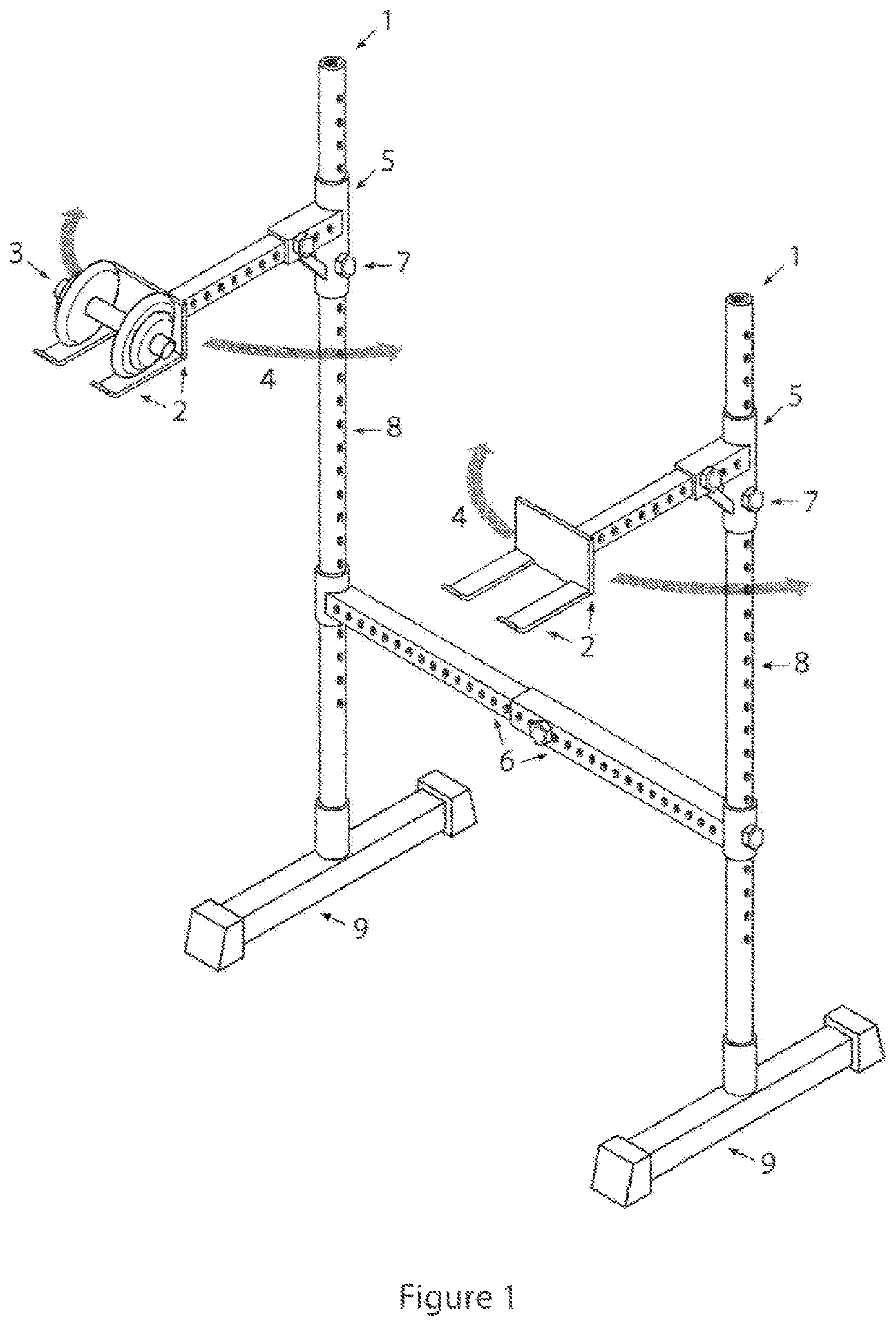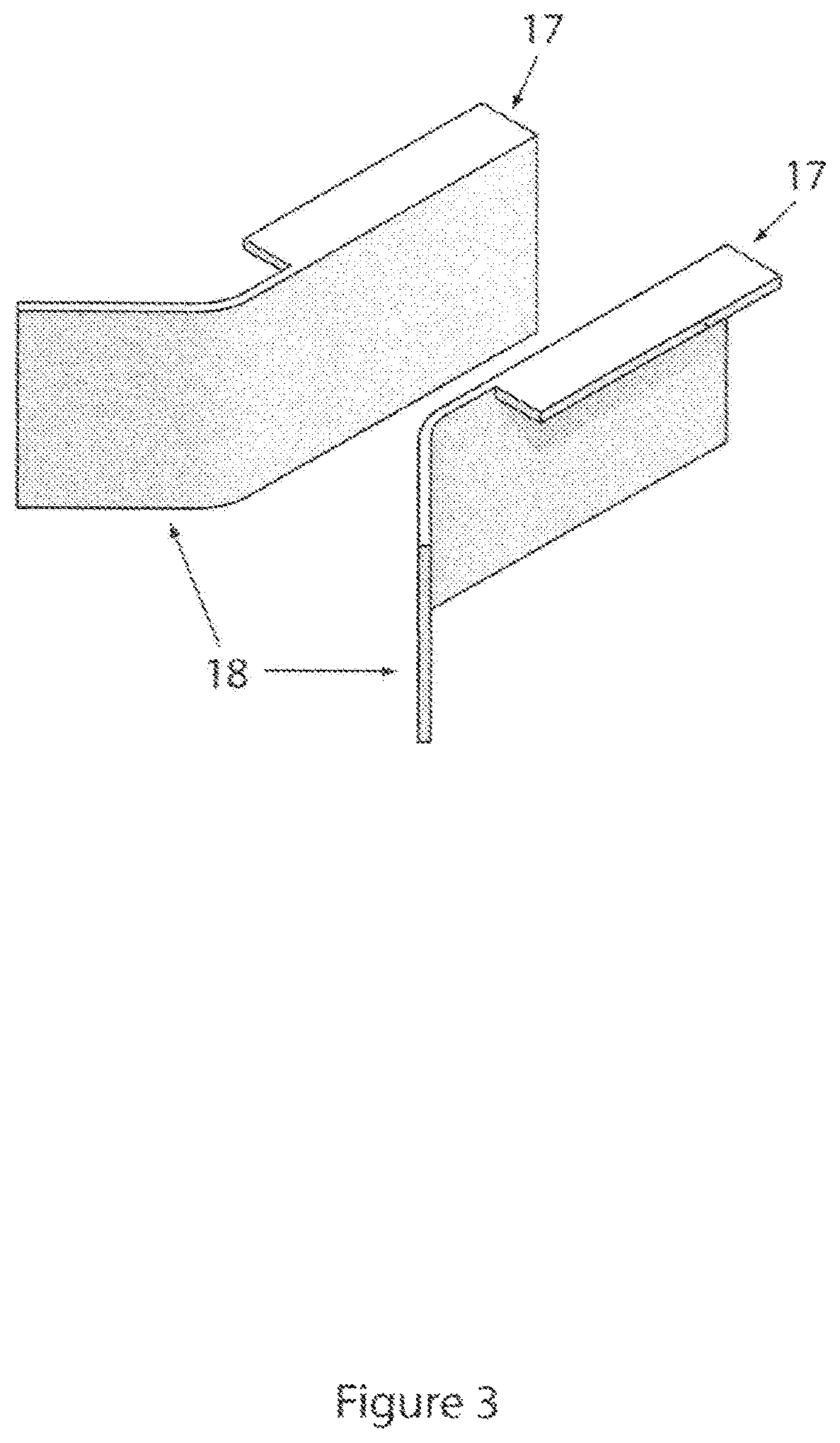Device to position dumbbells for exercise
a dumbbell and flexible technology, applied in the field of exercise equipment, can solve the problems of inability to use the above-mentioned methods to hold or adjust the dumbbell in a manner in which it can be removed, prior art commercially non-viable, and overwhelming manual methods of positioning dumbbells for exercis
- Summary
- Abstract
- Description
- Claims
- Application Information
AI Technical Summary
Benefits of technology
Problems solved by technology
Method used
Image
Examples
Embodiment Construction
[0065]FIG. 1 shows the invention configured as a free-standing, integrated unit comprised of two supports for two dumbbells holders which would be positioned to deliver dumbbells to each hand of the user who would typically be in either a standing, seated, lying, or incline position to perform the exercise and may have positioned another piece of related equipment nearby such as an incline bench. For example, the user could be seated or lying on an adjacent support when the dumbbells are removed from the rack, or the user could remove them in a standing position, or sit in the type of seat made for seated dumbbell presses to perform the exercise, and then return to a standing position to return the dumbbells to the rack. Any of these would be far easier than lifting the dumbbells from the floor or using a fixed stand which does not allow for extensive tailoring and adjustment of the dumbbell position such as described by the prior art.
[0066]Prior to the exercise, the user would posi...
PUM
 Login to View More
Login to View More Abstract
Description
Claims
Application Information
 Login to View More
Login to View More - R&D
- Intellectual Property
- Life Sciences
- Materials
- Tech Scout
- Unparalleled Data Quality
- Higher Quality Content
- 60% Fewer Hallucinations
Browse by: Latest US Patents, China's latest patents, Technical Efficacy Thesaurus, Application Domain, Technology Topic, Popular Technical Reports.
© 2025 PatSnap. All rights reserved.Legal|Privacy policy|Modern Slavery Act Transparency Statement|Sitemap|About US| Contact US: help@patsnap.com



